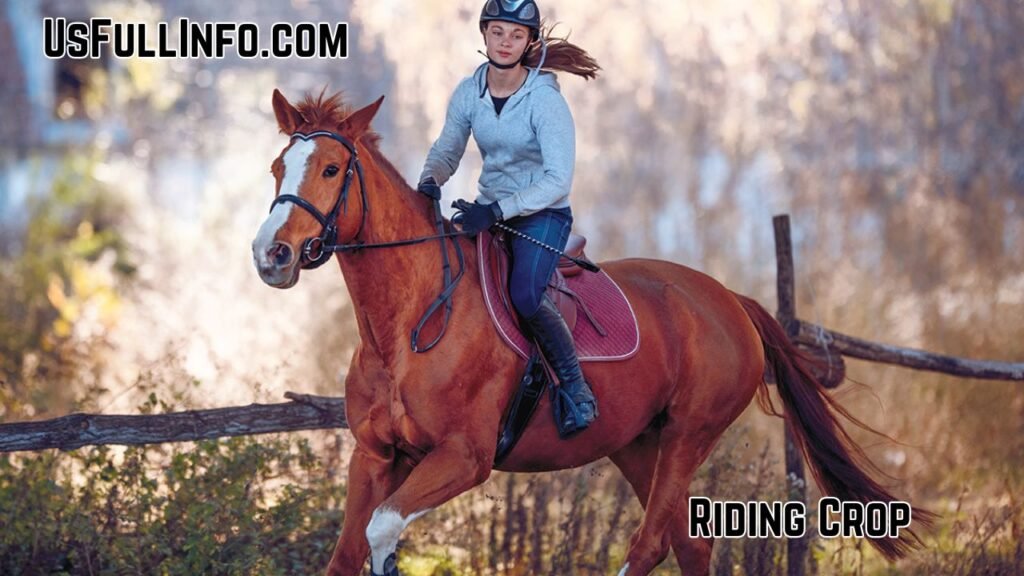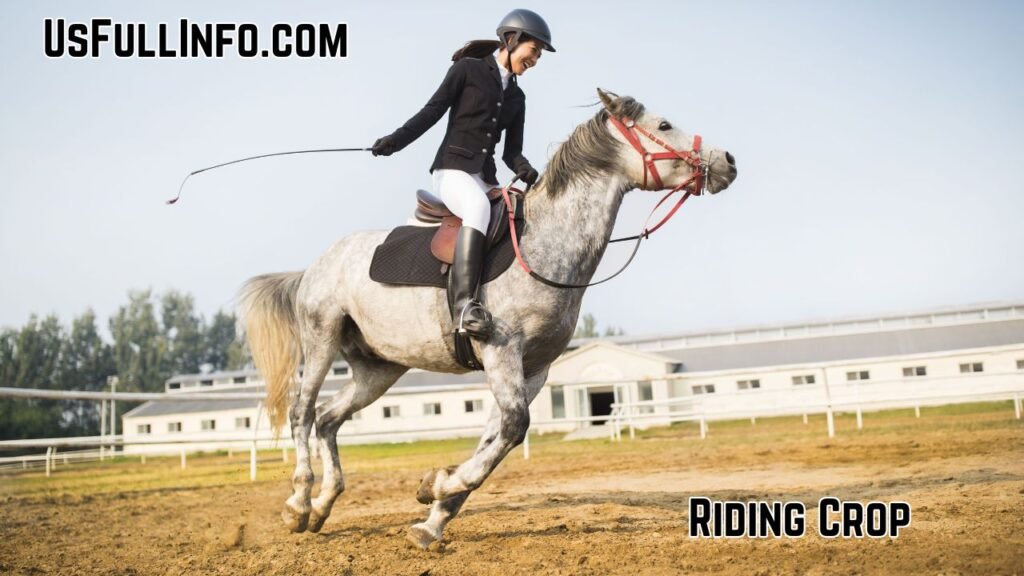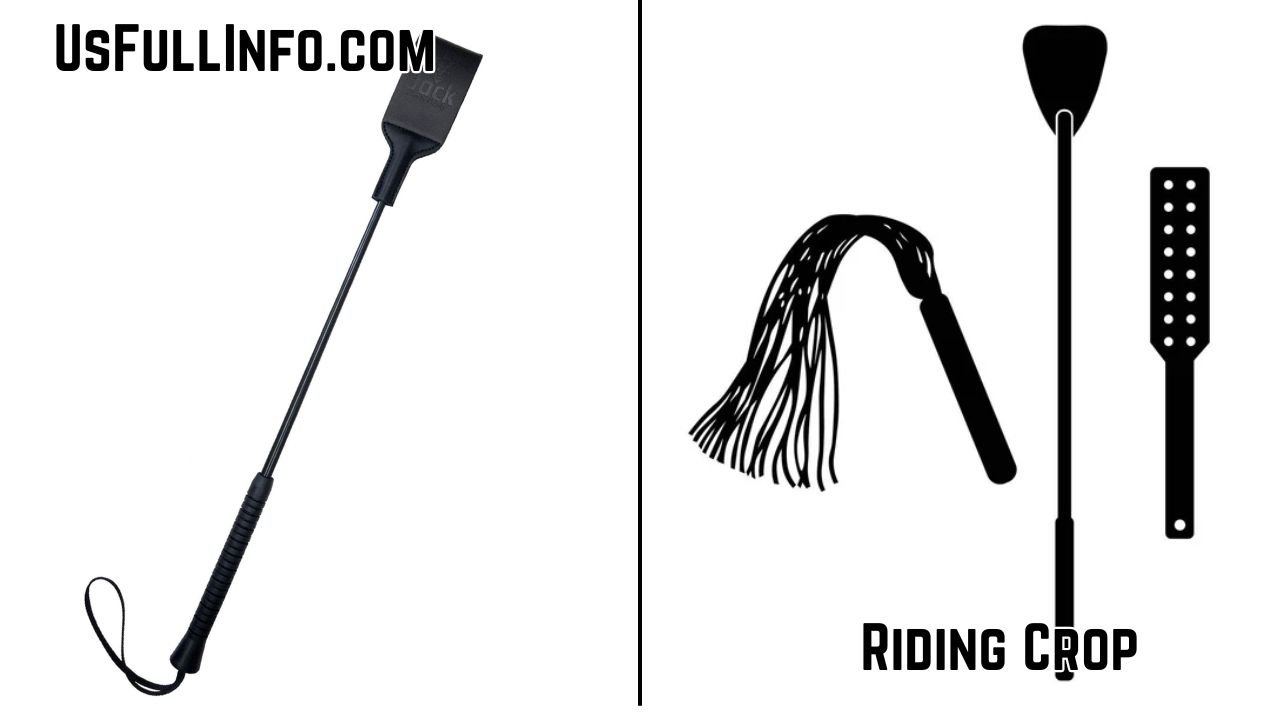Introduction: What Is a Riding Crop?
Among the many tools associated with horseback riding, the riding crop holds a special place. It’s not only a practical instrument but also a symbol of equestrian tradition and discipline. For centuries, the riding crop has been used by riders to communicate with their horses, offering guidance, encouragement, and precision.
When beginners first encounter the term “what is a riding crop”, they might imagine it as a simple stick used to control a horse. However, the reality is far more nuanced. A riding crop is a short, flexible tool designed to complement a rider’s natural aids — such as leg pressure and voice — rather than to punish the horse. Its purpose is to reinforce signals and improve communication, leading to a better partnership between rider and horse.
Throughout history, the riding crop has evolved from a simple whip into a refined piece of equipment. It combines craftsmanship, elegance, and utility — making it a timeless component of equestrian culture.
The History and Evolution of the Riding Crop
Before we explore how riding crops are used today, it’s essential to understand their origins. The use of tools to direct or signal animals dates back thousands of years. Ancient riders and carriage drivers relied on horse whips and horse crops to guide their mounts and teams.
As horsemanship evolved, particularly during the medieval and Renaissance periods, the design of the riding crop became more sophisticated. Early crops were often made from braided leather, wood, or cane, with a loop or lash at the end. These materials provided flexibility and control — essential traits for precise riding.
In the 18th and 19th centuries, as horseback riding became both a sport and a leisure activity, the leather riding crop emerged as a fashionable accessory among the elite. It symbolized not just authority but also refinement. Even today, high-quality riding crop whips are handcrafted with attention to detail, blending traditional artistry with modern materials like fiberglass and carbon fiber.
The Anatomy of a Riding Crop

To understand riding crop meaning, it helps to look at its structure. Though small, every part of a riding crop serves a specific function:
- Handle: The top part, often wrapped in leather or rubber, provides a firm grip for the rider.
- Shaft: Usually made from a flexible material like fiberglass, cane, or synthetic fiber, allowing the crop horseback riding motion to be precise yet gentle.
- Keeper or Slapper: A small leather tab at the end, used to make contact with the horse.
- Wrist Loop: Optional, but helps prevent the riding crop from slipping during use.
Together, these components create a balanced tool that allows a rider to deliver subtle, effective cues.
The Purpose of a Riding Crop in Horseback Riding
So, what is a riding crop used for in practical terms? Contrary to popular belief, a riding crop is not meant to inflict pain. Its purpose is communication.
When used correctly, a horse riding crop reinforces a rider’s leg or voice commands, helping the horse understand what is being asked. For example, if a horse is slow to respond to leg pressure, a light tap from a crop horse serves as a reminder — not a punishment.
Riders might also use a horseback riding crop to encourage forward movement, maintain rhythm during training, or refine transitions between gaits. It’s about precision and partnership, not dominance.
Different Types of Riding Crops
There are several variations of riding crops, each tailored to a specific discipline:
- General Purpose Crop: Short and flexible, ideal for casual or training rides.
- Jumping Crop: Slightly shorter, allowing quick, one-handed use during jumps.
- Dressage Whip: Longer than a typical crop, designed for subtle cues during dressage routines.
- Leather Riding Crop: Crafted for style and durability, often used in shows or competitions.
- Training Crop: Used by professionals during groundwork and schooling sessions.
These distinctions highlight how diverse the riding crops family is — each variation serving its own role in the equestrian world.
The Difference Between a Riding Crop and a Horse Whip
Many people use the terms riding crop and horse whip interchangeably, but they are not the same. The riding crop is generally shorter and more flexible, designed for quick, precise signals. A horse whip, on the other hand, is longer, allowing a rider to reach different parts of the horse’s body — especially in driving or racing contexts.
When discussing riding crop meaning versus horse whip meaning, the key difference lies in purpose. A riding crop whip enhances communication during riding, while a horse whip is often used for motivation in racing or carriage driving.
Proper Use of a Riding Crop
Learning how to use a riding crop correctly is essential. Misuse can lead to confusion or discomfort for the horse. Here are some guidelines for responsible use:
- Hold It Correctly: The riding crop is typically held in the same hand as the reins, with the thumb securing it in place.
- Use It Sparingly: Only use when the horse does not respond to a primary aid (like leg pressure).
- Apply Light Pressure: A quick, gentle tap on the shoulder or flank is sufficient.
- Never Use in Anger: A crop horse is a tool of guidance, not punishment.
- Reward Immediately: After a correct response, praise the horse to reinforce positive behavior.
Responsible riders understand that a horseback riding crop is an aid, not an enforcement tool.
Choosing the Right Riding Crop

Selecting the right riding crop depends on your riding style, level of experience, and discipline. For beginners, a medium-length riding crop whip with a comfortable handle is ideal. Professionals often prefer lightweight, high-quality leather riding crops for performance and precision.
When shopping for riding crops, consider:
- Length: Usually between 24 to 30 inches.
- Flexibility: A balance between stiffness and responsiveness.
- Material: Leather, nylon, or synthetic fibers for durability.
- Grip: Non-slip handles for comfort during long rides.
Remember — the best riding crop feels like an extension of your arm, natural and effortless.
Crop Horse Training Techniques
During training, the riding crop is used to refine signals rather than dominate. Trainers use it to develop responsiveness and attentiveness in horses.
For instance, a crop horseback riding session might involve tapping lightly behind the rider’s leg to encourage forward movement. Over time, the horse learns to associate this signal with specific actions, leading to improved performance.
Professional riders often emphasize timing and consistency — two key aspects of effective riding crop use.
Ethical Considerations of Using Riding Crops
The ethical debate surrounding horse whips and riding crops has been ongoing for years. Critics often associate these tools with harshness, but modern equestrianism promotes humane and respectful use.
In reality, when used correctly, the riding crop is a non-abusive, helpful aid that fosters better understanding between horse and rider. Reputable equestrian organizations worldwide endorse its responsible use, ensuring animal welfare remains the top priority.
Riding Crop in Sports and Competitions
In professional sports like show jumping, eventing, and racing, the riding crop plays a vital role. Riders rely on it for timing and communication during high-stakes performances.
However, governing bodies strictly regulate riding crop use to prevent misuse. For example, in horse racing, there are clear guidelines about the number and intensity of strikes permitted. These measures protect both horse and rider while maintaining fair play.
The Craftsmanship Behind Leather Riding Crops
A high-quality leather riding crop is often a work of art. Skilled artisans handcraft each piece, combining traditional techniques with modern materials.
Premium riding crops feature braided leather shafts, polished handles, and hand-stitched keepers. These details not only enhance durability but also add elegance. Riders who invest in a fine riding crop whip often consider it a reflection of their dedication to the sport.
Maintenance and Care for Your Riding Crop
To ensure longevity, proper care is essential. Always store your riding crop in a cool, dry place, away from moisture and heat. After use, wipe it down with a damp cloth to remove dirt or sweat.
For leather riding crops, occasional conditioning helps maintain flexibility and shine. A well-maintained riding crop not only lasts longer but also performs better over time.
The Symbolism of the Riding Crop
Beyond its practical purpose, the riding crop carries symbolic weight. In art, film, and culture, it represents authority, control, and discipline — though these portrayals often exaggerate its real-world use.
In equestrianism, however, the riding crop meaning remains grounded in partnership. It’s a reminder that great horsemanship relies on trust, not force.
The Future of Riding Crops
As technology advances, new materials and designs continue to enhance the functionality of riding crops. Innovations such as ergonomic grips, lightweight carbon shafts, and shock-absorbing designs make them safer and more efficient than ever.
Ethical awareness is also shaping the future of horseback riding crops, encouraging more compassionate and conscious riding practices.
Conclusion: Why the Riding Crop Remains Timeless
To summarize, the riding crop is much more than a tool — it’s a bridge between rider and horse. When used with respect and understanding, it enhances communication, precision, and harmony.
From traditional horse whips to modern riding crop whips, its evolution reflects centuries of equestrian wisdom and artistry. Whether made of fine leather or synthetic fiber, the riding crop remains an essential symbol of balance between control and compassion.
It’s not about power; it’s about partnership — a principle that defines the beauty of horseback riding itself.

